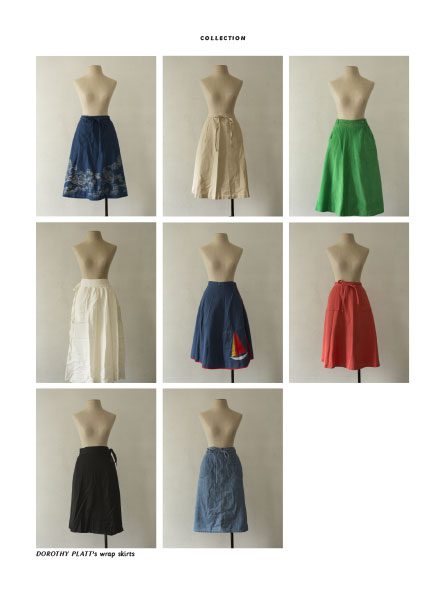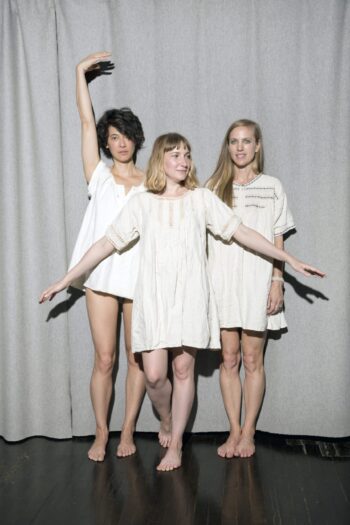
After noticing her boyfriend’s great care in selecting his clothing, the inherently inquisitive Sheila Heti (How Should a Person Be?) reached out to The Believer colleague and friend Heidi Julavits (The Vanishers) to investigate the relationship between women and their clothes. In the book’s introduction, Ms. Heti writes: “For someone who is fascinated by how people relate to one another, it’s hard to overlook personal style as a way we speak to the world.” With the help of Leanne Shapton (Swimming Studies) the three crafted a series of wide-reaching questions to probe the intricacies of femininity and clothing choices, including the emotional, “What is the most transformative conversation you have ever had on the subject of fashion or style?” and the anthropological, “What is your cultural background and how has that influenced how you dress?”.
Women in Clothes features the results of these surveys, giving voice to 639 women from a wide scope of countries and socioeconomic backgrounds, as well as interviews, email correspondence, and drawings. In our conversation, Ms. Julavits emphasized the plasticity and continued evolution of the project. The book includes such diverse contributions as essays on perfume selection, whether to wear lipstick as a female Israeli soldier, and wardrobe choices as an Orthodox Jewish woman in an MFA program. There are contributions from such literary darlings as Rachel Kushner, Lena Dunham, Miranda July, and Elif Batuman, as well as artist Cindy Sherman and actress Molly Ringwald.
Ultimately, it is the multiplicity of perspectives that makes Women in Clothes an immersive, fascinating experience—“un-put-downable,” to borrow a term from a friend. The book is well-balanced between serious, insightful journalism (an essay by human rights journalist Mac McClelland, an account of a collapsed clothing factory in Bangladesh) and pleasurable self-reflection (Julavits’s piece on a misplaced mitten and the downfall of refusing to accept loss). The reader feels included in an intimate, ongoing conversation about the relationship between our physical and emotional selves.
I spoke with Ms. Heti, Ms. Julavits, and Ms. Shapton via Skype, with the occasional interruption of poor connection and an eavesdropping ghost.
***
The Rumpus: My first question is: How did you approach the task of structuring a book like this one? Were there any essays or other elements that ended up getting cut that you were really sad about in the process of editing?
Julavits: Yeah. That’s a really great question.
Heti: No one’s asked us that.
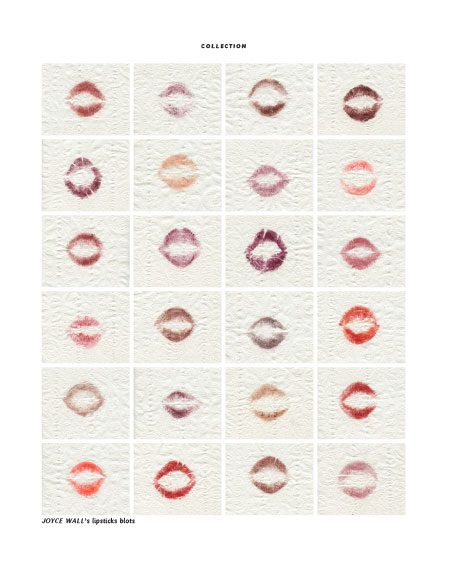 Julavits: Okay, so interestingly, we started out—there were so many quotes that we used temporarily and then discarded. At first we actually had some chapters—each of us was responsible for certain chapters that we personally identified—“I want to do a chapter on this, I want to do a chapter on that.” And then we were all bringing new ideas to each other that were inspired by something that was technically in somebody else’s chapter, and so we did away with this approach. But then later in the process, we were trying to figure out how to put all the pieces together, and we came up with—what was it, Sheila? Remember there was a period of time when we were organizing the book by the twelve months of the year, or something about—?
Julavits: Okay, so interestingly, we started out—there were so many quotes that we used temporarily and then discarded. At first we actually had some chapters—each of us was responsible for certain chapters that we personally identified—“I want to do a chapter on this, I want to do a chapter on that.” And then we were all bringing new ideas to each other that were inspired by something that was technically in somebody else’s chapter, and so we did away with this approach. But then later in the process, we were trying to figure out how to put all the pieces together, and we came up with—what was it, Sheila? Remember there was a period of time when we were organizing the book by the twelve months of the year, or something about—?
Shapton: Seasons.
Julavits: Seasons! Yeah!
Shapton: “This is the winter.”
Julavits: Yeah, “this is the winter.” And then pretty quickly we realized that it just had to be—I mean, I know a mix tape metaphor is going to fall dead on most ears, no one makes mix tapes anymore, right?—but we had this crazy Skype session that I remember, where I was in Berlin, and it was really late at night, so it was probably not late at night for you guys, we were just like, “What do we want to read first? What’s the first thing we want to read?” and we came up with the first piece. And then—what should happen? What do we want to read next? What’s the next thing we want to read? And we just started to build the table of contents like that. Do you guys want to throw in about chapters and stuff?
Shapton: Yeah, we had a basic order. We just started making an order for the book because we had check-in periods; in November of 2013 we wanted to see where we were with the book, and then in April of 2014 we again wanted to see where we were with the book, so we had different structures in place. Then finally we went up to Toronto to do a little bit of work, to re-read everything and put the book in order—I think this was in March? We had this sort of conceptual idea that fell apart very quickly but served its purpose. In Sheila’s apartment, we drew an outline of her body on her wall, and we realized— [Skype breakup]
Rumpus: Hello? Hello?
Heti: Can you hear us?
Rumpus: I can hear you now.
Shapton: What did you miss?
Rumpus: You had Sheila’s body in the apartment.
Julavits: Sheila’s body in the apartment!
Shapton: We just put an outline of Sheila’s body on the wall; we felt the body represented a certain structure… so we went through the book with post-its with each piece, and we stuck it on the body where we felt it belonged conceptually.
Julavits: Oh no. Did you lose us again?
Rumpus: I did lose you again.
Heti: Call us back, but we’ll turn off video.
Rumpus: Okay, so can you go back to the chalk outline of Sheila?
Heti: Basically what Leanne was saying was—imagine a chalk outline of a woman on the wall, and we had post-it notes with every piece written. Some were yellow if they were essays, and some were pink if they were snippets—and we just tried to stick the post-it notes on the body in such a way that it was symmetrical and harmonious; balanced. With the ring cycle it was very obvious that that would go on the hand, but there were some things that were more conceptual like, where do you put mothers? Well, we just sort of tried to put everything conceptually on a different part of the body—
Julavits: On the breast.
Heti: On the breast, or the uterus. I remember what we did; we just tried to visualize and connect the book back to the body, and balance the right side of the body, which was the beginning of the book, with the left side of the body, which was the end of the book. Pretty abstract. Finally we just made the order, and then we put the pages in that physical order, and then we just went through it, reading it. “Okay, now it gets a little slow here, now we need an image.” We just tried to make a pleasurable flow. I think the most important thing we realized was that we didn’t want chapters, we just wanted a nice way of walking through the book, where there was variety and interesting things pressing up against each other, one after the other.
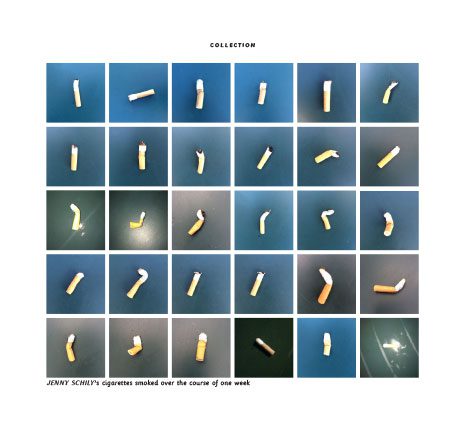 Rumpus: I’m interested in the incorporation of non-clothing topics, like handwriting and perfume choices. How did the original conception of the project evolve to include these elements?
Rumpus: I’m interested in the incorporation of non-clothing topics, like handwriting and perfume choices. How did the original conception of the project evolve to include these elements?
Julavits: Well, we frequently talk about how the project kept evolving until basically two weeks ago when it was published. The project was constantly evolving, and part of what was so fantastic about working on this, and especially working on it with Sheila and Leanne, is we interrogated absolutely everything. Everything we came across we would just think, where else could this lead us? What else does this book need? Now that this new piece is here, it seems to suggest yet an absence. We kept attacking the book that way. It was this constantly evolving conception.
Heti: In terms of the signatures, specifically, Micah Lexier is an artist who’s worked with Leanne before, and I interviewed him for The Believer, and he has such an interesting aesthetic and ideas. So we went to him and said, “Do you have anything related to this?” So he came up with those signatures, which weren’t a final art project, but which were part of his process towards a finished art project. We realized after seeing those pages that signatures are another kind of dressing—another way to represent yourself. So some artists brought ideas to us that we just wanted to have involved in the book, and were excited by their idea of what the book could be.
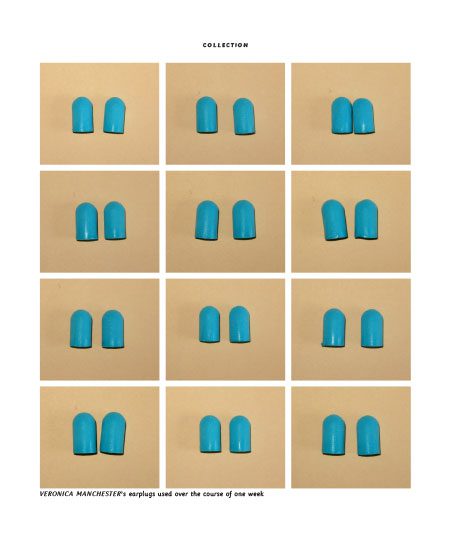 Shapton: Yeah, and I think the same thing with perfume. It is part of how you present yourself in the world. We weren’t always talking literally about clothes, we were talking about the woman in the clothes. The bodily is covered very heavily because the book isn’t exactly about clothes, it is about the invisible ways you clothe and present yourself. Or the not-so-invisible ways.
Shapton: Yeah, and I think the same thing with perfume. It is part of how you present yourself in the world. We weren’t always talking literally about clothes, we were talking about the woman in the clothes. The bodily is covered very heavily because the book isn’t exactly about clothes, it is about the invisible ways you clothe and present yourself. Or the not-so-invisible ways.
Rumpus: Sheila, in your essay with Juliet Jacques, you begin by saying, “I feel like a name is something that you wear, and I wonder how you chose your name.” And it struck me that each of you has a really distinctive first name; do you feel like this has impacted you? How do you “wear” your names?
Julavits: So good! That’s such a good question! We’ve never gotten this one before!
Heti: Well, when I was a little kid—when I was seven or eight or nine or ten, I had this list of names; I would collect girls’ names. I was completely obsessed with names, and I would look at this list and think about them, and I guess it was a proto way of thinking about characters, just looking at these names. So on one level it’s sort of exciting to have a book with 639 names. Something deep, some little-girl part of me, loves all the names in the book. And I also love titles of books, so I love names in that sense, too.
In terms of my own name, there were other times in my life when I wanted different names. For a few months in my early twenties, I wanted to change my name to George—it was my grandfather’s name, he was an artist, and I never knew him. But I basically like Sheila Heti as a whole name. You always think of yourself as all your names, not just your first names. Sheila, if you cut it in half, it says ‘she’ and if you cut Heti in half it’s ‘he’. That makes me feel good. I’m kind of obsessed with names.
Julavits: That’s so amazing.
Heti: I sort of envy people who choose their name halfway through life, who decided, “This is me.” But at this point I don’t think I would do that. I also like how in many relationships, when people are in love, they name each other. They give pet names. That seems really beautiful. That’s a long, narcissistic answer to your question.
Julavits: That’s such an amazing answer. Well, I actually am named after a character—Heidi is the name of a storybook character. I feel like I have been sort of battling this alter ego my entire life. Someone asked us recently why we wear certain things, and I was talking about myself as having this kind of cheerleader look that I have tried to work against. It’s like a sweet, goat-milk-fed girl in the Swiss Alps. Whenever you hear the name Heidi… unfortunately I also do have blonde hair and I also do wear braids, not helping the problem at all. I think I grew up in a very WASP-y area of the country, in Maine. I always felt kind of ethnic there, having a last name like Julavits. I always craved having some kind of WASP-y name.
Shapton: I was named after my grandfather, Leandro. And my brother, his middle name is Leandro. I guess with my name I’ve always felt that history and that connection to this man who became mythologized because he died in a mining accident when my mother was eight years old, and I craved stories about who he was. I can’t help thinking that this is also… a vintage, inherited thing. That’s really what I’m drawn to in terms of stories—ghosts, the dead, all of this stuff.
Rumpus: Playing into that a little bit, how has your familial or cultural background played into your sense of fashion or style?
Shapton: This is our question!
Julavits: I know!
Rumpus: I wanted to turn it around on you.
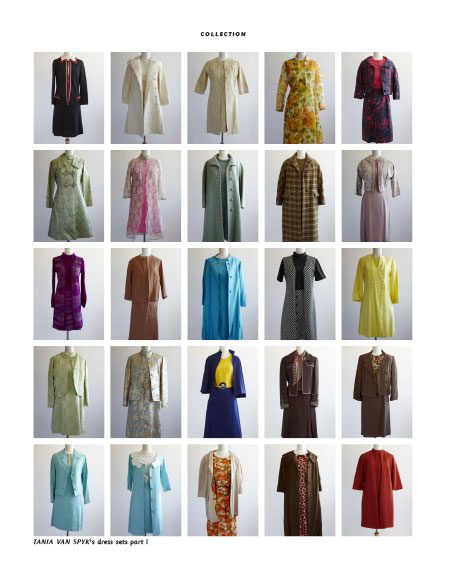 Shapton: My mom’s from the Philippines, and her family emigrated when she was in her early twenties, and a lot of the culture around buying clothes and shopping was about fitting in, and going to outlet malls and taking the trip down to Buffalo, to go to Payless Shoes or to go to Calvin Klein or Brooks Brothers, outlet stores. And that I think informed a bit of the sense of both belonging and of “the other” that I still have. My dad is Canadian, from Saskatchewan, and collects old cars. Old things were always a part of my upbringing, and so return to my love of vintage.
Shapton: My mom’s from the Philippines, and her family emigrated when she was in her early twenties, and a lot of the culture around buying clothes and shopping was about fitting in, and going to outlet malls and taking the trip down to Buffalo, to go to Payless Shoes or to go to Calvin Klein or Brooks Brothers, outlet stores. And that I think informed a bit of the sense of both belonging and of “the other” that I still have. My dad is Canadian, from Saskatchewan, and collects old cars. Old things were always a part of my upbringing, and so return to my love of vintage.
Heti: My mother always was working a lot, very busy, and I don’t feel like she spent time giving me messages about dressing, or femininity, or femaleness—I feel like there was a huge part of my education that I never got. So part of the reason I think I wanted to do this book was not only to think about clothes but to think about femaleness and femininity and all these things that I was lucky not to have received big lessons in. You couldn’t hear her, but Leanne just said I was lucky—I’m sure I was lucky but I also feel like there’s a gap in my education that I’ve always kind of been curious about. With my father, too, there was no emphasis in my family placed on how you looked. Though my mother is somebody who puts care into how she dresses, she just didn’t project that onto me.
Julavits: It’s inaccurate to say that I felt like I had no cultural background; I think I always felt like my family was a little bit deracinated in a way. We didn’t have a religion, we didn’t live anywhere near any of either sides of my family, and we didn’t have a lot of rituals or traditions. As a kid, I would always gravitate towards friends who had very, very specific cultural backgrounds. In fact, my two best friends when I was a young kid, one was from a family that was so intensely Catholic that her parents actually started the Right to Life movement in Maine, and my other friend was Orthodox Jewish and spent all of her summers in Israel on a kibbutz. I think my sense of my family was that we had no culture, that we were culture-less. I was always seeking other people and other families that seemed to have much more defined, inherited, passed-down culture than mine did. Of course, looking back, that’s completely incorrect. And doing this book—in a way it makes me able to see my own family with a bit more clarity, because it seems to be maybe invisible to you at first. Doing the book makes me much more sensitive to what seems to be somewhat invisible. Being able to read more deeply into that space that seemed to be not giving a clear message, at first.
Heti: Maybe one always thinks they’re the norm, or their family is the norm, and everyone else is this deviation from it, because it’s what you knew first. But doing this book you see very clearly your own customs and the idiosyncrasies of your own life and manners.
Rumpus: Can you speak a little bit about the processing of designing the illustrations (“activating the grey,” as you put it)? What challenges were presented in incorporating visuals alongside the text?
Shapton: Early on we all pretty much agreed that we wanted this to feel like an art project. We really wanted it to look like a book that isn’t out there, and I was referencing German artist Hans-Peter Feldmann, with the collections and grids. Heidi came up with the wear-area maps, and those were sort of based on something she had come across and a Red Cross book that I’d heard of. So it was actually pretty easy to activate the grey because as the book developed and as the questions came in, one of the questions we would all ask ourselves, we would say, “Could this turn into a visual feature?” or “I have an idea to look at this issue visually.”
One of the things we decided really early on was to not show pictures of women because of the snap judgments we make visually. I thought the design should be really clean so that women could project their own ideas in the most generous way, and that the voices of these women weren’t going to mediated by too much typographic style, or be dated by the kinds of photographs we were using.
Heti: One of my early ideas was that it would be like an Encyclopedia. I feel like that is tone of the book in some way. It has that density, that plainness. You know, you’d look at the Encyclopedia and you’d see the word platypus and then you’d see a platypus. Just this way that things would be represented and illustrated—sort of matter-of-fact. I wanted that for our book.
Rumpus: Are there any pieces or styles that you absolutely will not wear?
Heti: I personally don’t really like revealing my body. I don’t feel like that’s what I want to do in the world. I don’t feel like that’s what I want people to interact with when they interact with me. I like interacting with people with my face rather than with my figure. But that’s just my own shit.
Julavits: Thongs. I don’t like interacting with people through my thongs.
Heti: I have this fantasy that no one can really see me, this fantasy that I don’t really exist in the world or something. And I feel like maybe I dress in a way that’s a communication of that fantasy.
Shapton: But you—not to assume, but you do probably dress to be seen to your boyfriend.
Heti: But maybe not as much as another woman would want to be seen by her boyfriend.
Shapton: I understand. Hmm, what would I never…
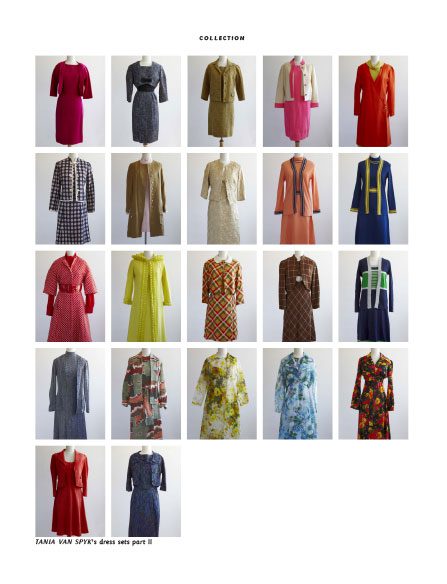 Julavits: Let me think. What would you never wear? What would I never give you?
Julavits: Let me think. What would you never wear? What would I never give you?
Heti: Leanne’s pretty experimental.
Shapton: There’s probably nothing I wouldn’t wear—even just to try on. I’ll try it on. I would. But I wonder if that has something to do with being an athlete, where you just see your body as a tool, as a functioning thing. And there’s a lack of self-consciousness that athletes can have, which is just, “it’s this piece of muscle,” whatever. Not that I lack vanity. What about you, Heidi? Ancient foot-hobbling shoes? China?
Heti: Heidi has bunions.
Julavits: I’m trying to think. Something I absolutely could not wear. I mean it might just end with thongs. I did, very on purpose, decide to start wearing heels when I was 40. I never wore heels before I was 40, and then that’s when I got bunions. So that’s what those turning-40 promises will do to you. Maybe because now I’m 46, I so remember this interview I read with Jessica Lang, in Interview, where she said she really never wore makeup or never wore clothes to show off her body when she was younger, and once she started to hit middle age she sort of regretted that she hadn’t had more fun.
Shapton: It’s like the Nora Ephron bikini quote.
Julavits: And I weirdly do—that quote comes to mind more often than it has in the past. I just think, oh, maybe I shouldn’t be wearing this sack dress that obscures my whole body. Tonight! We’re all wearing sack dresses!
Rumpus: I’m sure they’re beautiful sacks.
Shapton: They’re not bad.
Rumpus: Have you been surprised by any of the reactions to the project, now that it’s out in the world?
Heti: I’m surprised that more men haven’t said things about it. I didn’t really see the audience as being so female, but it’s being skewed more female than I anticipated. Maybe because so far it’s been reviewed in a lot of fashion magazines, but maybe that’ll change. Every time you publish a book you wind up with a different audience, so it’s interesting to see who it is.
Shapton: There’s been a nice response from women over 40, 50-60? Which has been not necessarily surprising, but lovely.
Heti: 90-year-olds love our book.
Julavits: Somebody the other day I was talking to was just like, “Have the teenagers gone wild over this?” and I said, “I don’t know, maybe,” and she said, “I just feel like when I was a teenager I would’ve bought this, and I would’ve studied it like the Bible.” Or like a Bible, not like the Bible.
Shapton: Oh my God, what is that noise? Amy, do you hear that?
Julavits: There’s a ghost in this hotel.
Shapton: Are you moving something around, like your tape recorder on the top of your desk or something?
Rumpus: No! What do you hear?
Julavits: Are you vacuuming?
Shapton: Because it was like a voice. Somebody must have died in this hotel, and the ghost must be here.
Julavits: We have to find a new hotel for every conceivable reason.
Heti: It’s okay, there’s no ghosts. It’s not ghosts. It’s just Skype.
Shapton: Skype is fucked up.
Julavits: Skype is full of the dead. The dead always speak through Skype. Next question!
Rumpus: I read in Heidi’s interview at W Magazine about distributing the survey worldwide, especially your attempts to include surveys of lower-income women without regular computer access. Can you speak about your outreach efforts and any problems you encountered along the way?
Julavits: Sure, we went through a particular few journalists in the Middle East and India who then also knew a lot of journalists and people who worked in governmental positions, or who worked for NGOs and had direct contact with people we couldn’t reach. And Cambodian tailors, Sheila can speak to the Cambodian tailors. We were less driven by some sense of mandatory diversity than we were by our own curiosity. So when we first sent out the survey, we sent it to people to whom we had immediate reach, or to whom those people had immediate reach. We didn’t really try very hard, save to send it out and see where it went. We weren’t trying to guide its path through the world. And the answers we got back were all really fantastic but made us realize, wow, we really want answers from every conceivable type of woman that we can possibly reach. And it became really more a matter of, we were just so greedily curious. Then we were being a little bit more pointed in how we tried to contact women who weren’t directly connected to us.
Heti: For instance, I reached out to this woman who’s a dancer, and we talked to her daughter, who was working in Cambodia, and she knew this tailor—this woman never would have reached our survey just because we put it on Facebook or Twitter. So she went and interviewed this tailor, and the interview’s in the book. We tried to get as much stuff like that as possible, in terms of asking who other people thought that we should interview, or getting them to interview who they wanted.
Rumpus: I have one more question. Since finishing the project, do you find yourself approaching fashion differently?
Shapton: Fashion or clothes or how we get dressed? The fashion world?
Rumpus: I meant how you get dressed, but the fashion world—we can go there.
Shapton: I’d say because of reading interviews with the Cambodian sweatshop workers and the Mac McLelland interview I only want to shop second-hand. That’s how my shopping habits and approach to clothes has changed. I also have always liked shopping second-hand or vintage—oh my God, I just keep coming back to vintage—because, it’s rarer to me. Those two pieces did really touch me and make me change something in my life.
Julavits: I just feel like my attention is re-directed; it goes to different places than it did before. I think before I really was quite attuned to picking up and noticing the people who were vying for my attention on the sidewalk, and now I feel much more interested in the people who are not actively vying for my attention. Those are the women that I really look at, the women that I say, “Okay, given what I’ve learned reading this book, I can kind of intuit better what kind of decisions they made in the morning when they got dressed.” Those women I see more now than the women who before were really like, “Hey, I’m interesting! Look at me!” I don’t look at those women so much anymore.
Shapton: Because the questions were so well-designed from the start and they came from this place of real curiosity and real connection, I now can’t really look at fashion media the same way because the questions that people are asked are so simple, and so I’m harder on what I’m seeing, which is always a good thing to happen after reading something and after working on a book.
Heti: Before, this would be typical for me: I’d go out and I’d be cold, and I wouldn’t be able to get home for some reason so I’d buy a sweater, and my closet was kind of made up of these sudden things that I’d bought because I hadn’t prepared well for the day. So now I’m just a bit slower with everything. I won’t just buy a sweater because I’m cold; I’ll try and think in the morning, “What’s the day going to be like?” and then go out dressed right for it. As a result, also I try to buy clothes that I might like in a couple years, rather than just what I need to get through the day. I don’t want this to make me sound like I was impulsively buying exquisite sweaters. It was just like—what’s the word that I’m looking for?
Shapton: Happenstance?
Heti: No, like when you try to fix something with a little…? You know, like when your faucet’s leaking and then you just—?
Shapton: Jerry-rigged?
Heti: Yeah, I felt my wardrobe was slightly jerry-rigged.
Shapton and Julavits: Jerry-rigged!
Heti: That was the way I felt dressed in the world.
Shapton: You didn’t look it!
Heti: Thank you. Anyway, somebody said in our book, “Your closet should be pieces that you like, and you love, and want to keep around for awhile,” and I just never thought about objects very much in my life, and after doing this book… I should give more respect to objects, you know? And take objects a little more seriously.
Shapton: The physical world.
Heti: The physical world in general. Not just clothes, but everything.

